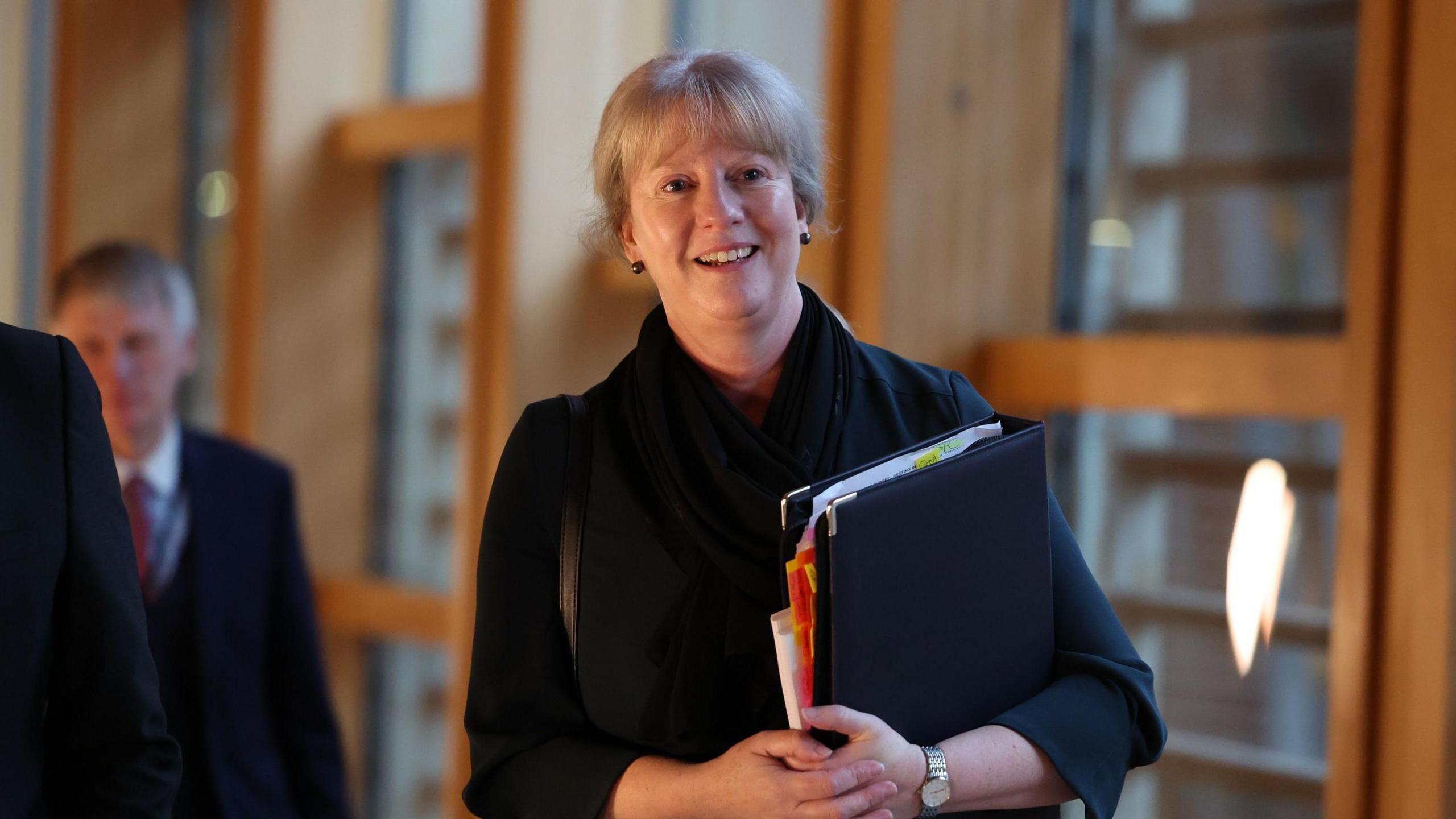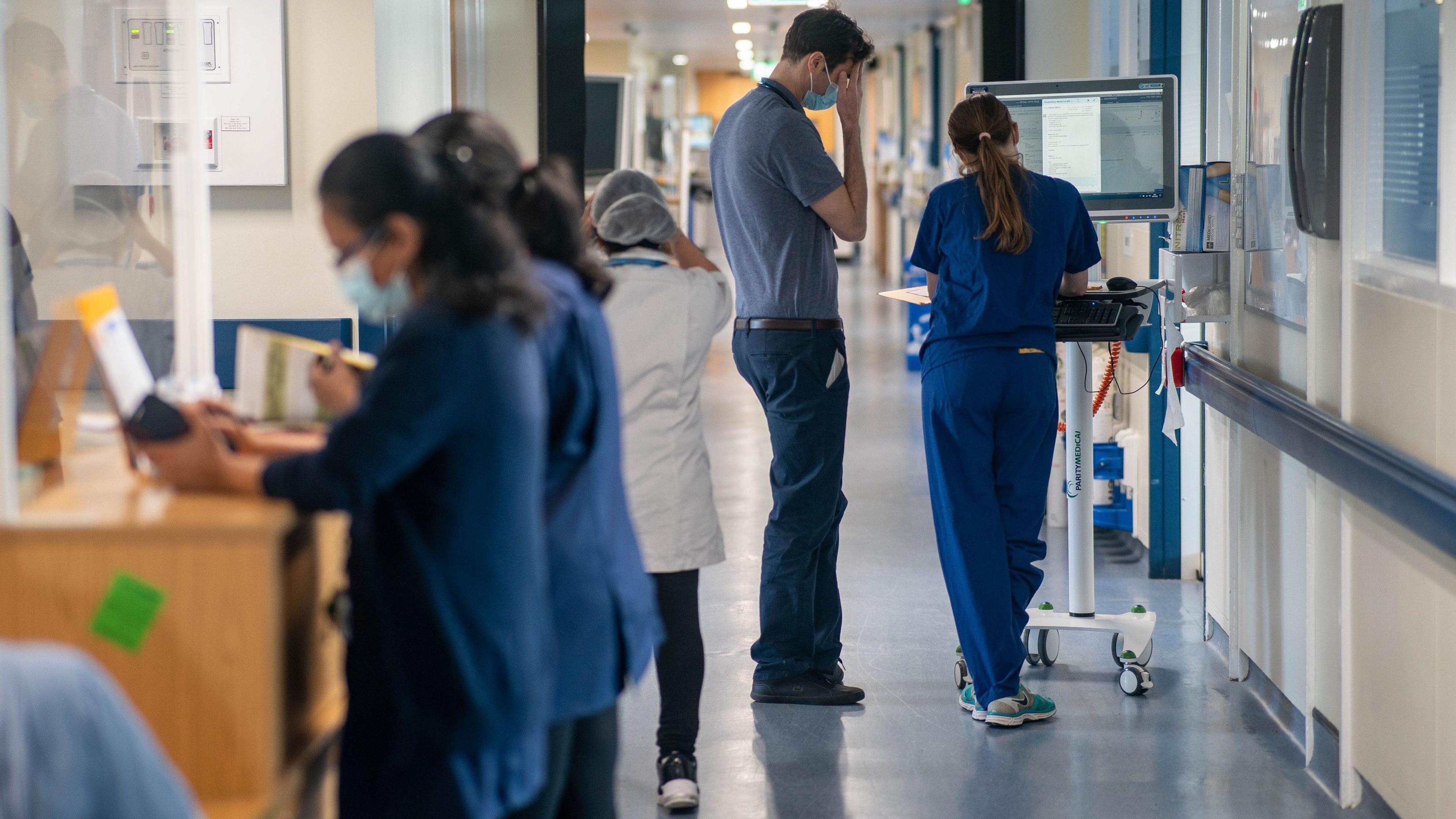Early Budget analysis suggests several causes for concern

Finance Secretary Shona Robison delivered this year's budget to the Scottish Parliament on Wednesday
- Published
The draft Holyrood budget had a lot of work to do: responding to public services badly in need of repair, reducing child poverty and boosting economic growth, securing enough votes to pass the legislation in February, and setting the direction for John Swinney to take his party into the next election.
Although it had the same finance secretary as last year, the occupant of Bute House has changed. Mr Swinney, a veteran of at least nine budgets as finance secretary, wanted this to signal stability after the turmoil of recent years and changes of first minister.
So there was a promise of no further divergence on income tax for at least two years.
That was something, but not enough for business representatives complaining that the divergence in income tax, accelerated by Shona Robison last year and hitting higher earners harder than those in England, is causing difficulty in recruitment while acting as a brake on economic growth.
As with many budget statements, it was the stuff that wasn't included that tells the bigger broader story, and early analysis suggests there are several causes for concern.
The release of a lot more funds for this year and next in Rachel Reeves' first budget as Chancellor at Westminster allowed Shona Robison to offer a modest real terms increase in several department budgets, with less modest increases in capital budgets.
Five key takeaways from the Scottish Budget
- Published4 December 2024
SNP government vows to scrap two-child benefit cap
- Published4 December 2024
The arts got a big uplift. Housing saw last year's big cut restored. Renewable energy received a tripling of the funds available for investment.
Rural Affairs was one department that saw a real-terms cut, bringing an angry response from landowners.
The property sector, also not known for enjoying much public sympathy, was hit by a one-third increase in tax on buying a second home, including one for investment or rental.
Look beyond the allocations this year and at the underlying position of Scotland's public finances, and this does not look like a budget to face long-term challenges, which have been set out in ever more stark appeals from the Audit Scotland watchdog.
The auditor general said recently that the budget is unsustainable. A new promise was made to mitigate the Westminster cut to older Scots' winter fuel payments, making it look a little less sustainable.
Likewise, the headline-grabbing promise to reverse the cap in benefits on families with more than two children.

The cost of reversing the cap in benefits on families with more than two children is not yet clear
That idea arrived with the Scottish Fiscal Commission too late to let it insert costings in its report on the budget.
The Scottish finance minister Ivan McKee said it looks like £110m. The Fraser of Allander Institute says it could be £150m, rising to £200m per year. The Institute for Fiscal Studies estimates £200m to £300m.
The point is that no-one yet knows what it will cost. And while expectations are raised, it depends on co-operation from the UK government as well as some patience, as it's not included in next year's draft budget and might happen in 2026.
That's part of the growing cost of welfare as a share of the Scottish government budget. That's to be expected, as more benefits are devolved.
But the amount allocated by the UK Treasury in lieu of the funds it would be spending in Scotland without devolving those powers is far short of the amount being spent.
To be more generous with benefits, including the Scottish Child Payment, the Scottish government has to find an extra £1.3 bn next year. In only two years, that extra spend on welfare has gone up from nearly £500m.
That money obviously can't also be spent on public services. As a consequence, the total spent on public services is facing a real terms decline.

Some tax thresholds will change following the budget
The increased cost for the public sector in Scotland of Rachel Reeves' sharp increase in employers' National Insurance contributions has been much discussed over the past month.
It has become clear from the UK government that it will allocate a formula-based amount to Scotland, and will not compensate for the relatively large public sector workforce or relatively higher Scots pay.
But the Treasury has not given a number for that yet. So the Scottish government has not budgeted either for the inflow of funds in lieu of that, nor for the additional hundreds of millions it is likely to have to find to make up the difference. Omitting that is what fiscal experts call a "risk".
The "risk" last year was to leave out the public sector pay policy. By the time Shona Robison announced it, it was already being bust by trade union pressure.
This time, there is a figure, of 3% this year and 9% over three years. To that, the Scottish Fiscal Commission adds an assumption that automatic pay progression costs 1.5% a year.
If that can't be afforded by the money available, and if the payroll bill doesn't add up, it could mean a cut in workforce numbers. But Scottish ministers aren't saying anything about that, until well into next year.
'Honest discussions'
The budget statement made reference to the need for reform of public services, which could help ease some of this pressure, if productivity could be improved and outcomes with it.
But there was little detail. One independent commentator on finance, Bruce Cartwright, chief executive of the Institute of Chartered Accountants of Scotland, is one of those awaiting more.
"We rightly heard some very big numbers going into public services, including a record £21bn allocation for the NHS," he said. "But we need to have honest discussions about the outcomes of these investments.
"There is no point spending more money on health services or schools, if there’s no willingness or incentive to change how we deliver these services. We need to identify how and where things must improve.
"We also need to see evidence of whether standards have gone up, waiting times have come down, and more crimes have been solved."
The pre-budget calls for reform of council tax and business rates met with a similar lack of detail, and a new tax strategy, published with the budget, promises only to debate the options.
The room for manoeuvre on reform and on growing commitments to provide welfare along with free public services is narrowing, according to the evidence and the experts.
Income tax revenue in Scotland is not growing as fast as it is in the UK, because the economy is forecast by the Fiscal Commission to grow slowly - 1.2% this year, rising to 1.6% next year before falling back again.
Within that, earnings growth remains sluggish, falling from 2% to 1.5% next year, and below 1% for each of the following four years. Without faster earnings growth, income tax revenue will continue to disappoint.
There are measures to boost economic growth, but the Scottish Fiscal Commission forecasts are underwhelmed by how much impact they'll have.
And that implies a continued squeeze on the money available to the Scottish government beyond next year.
- Published4 December 2024

- Published4 December 2024
